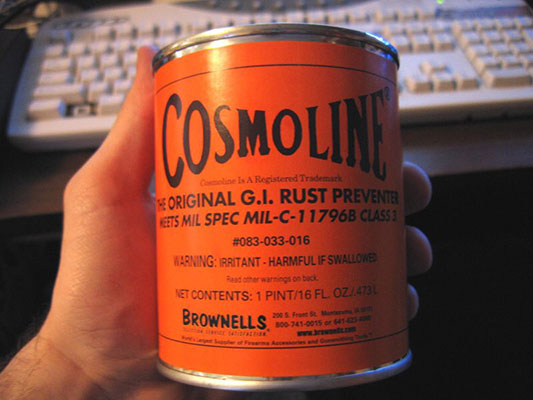Cosmoline is a protective grease commonly used in firearms to prevent rust and corrosion during storage, particularly for military surplus weapons.
While it plays a crucial role in preserving the condition of firearms, it can also pose challenges when it comes to cleaning and maintenance.
Firearm owners often find themselves grappling with the residue left behind by cosmoline, and knowing how to deal with it properly is important for both functional and legal reasons.
In this article, we’ll explore the importance of cosmoline, the cleaning process, and the legal implications surrounding its removal.
Understanding Cosmoline and Its Purpose
Cosmoline is a thick, wax-like substance that was widely used by military forces, particularly during the 20th century, to protect firearms from the harsh environmental elements during long-term storage. It prevents rust by forming a barrier between metal parts and moisture, making it an invaluable tool for firearm manufacturers and military personnel. However, while cosmoline serves a vital purpose in keeping firearms safe from corrosion, it can make the process of handling, cleaning, and using the weapon somewhat cumbersome.
The Challenges of Removing Cosmoline
One of the most significant challenges faced by firearm owners when dealing with cosmoline is its removal. The substance is sticky, thick, and resistant to simple cleaning methods. Without proper knowledge and tools, removing cosmoline can be time-consuming and frustrating. However, it is essential to ensure that the firearm is free from cosmoline residue before using or storing it, as the grease can impair its functionality and create safety issues. The cleaning process typically involves disassembling the firearm, applying heat or solvents, and carefully wiping away the cosmoline.
It’s important to note that certain solvents can be harsh on specific firearm finishes or parts, so it’s crucial to use the correct products. There are also specialized degreasers and cleaners designed to remove cosmoline without damaging the weapon’s surface or internal components. The key is to approach the task carefully and methodically, as a rushed job could result in long-term damage to the firearm.
Firearms Legal Protection in Relation to Cosmoline
Dealing with cosmoline and firearms is not only a matter of maintenance but can also intersect with legal considerations. In some regions, the handling and modification of firearms, including cleaning and removing protective substances like cosmoline, are subject to specific regulations. In the United States, for example, the National Firearms Act (NFA) and the Gun Control Act (GCA) outline strict rules regarding firearm ownership, possession, and modification.
When removing cosmoline from a firearm, it is crucial to ensure that the cleaning process does not inadvertently alter the firearm in a way that would violate legal statutes. For example, removing cosmoline from a firearm and reassembling it incorrectly could potentially impact the firearm’s legality or status, especially if the modification affects its classification under the law. Additionally, some firearms, particularly those that have been classified as “curio and relic” items, may have additional restrictions on their alteration or use.
To avoid potential legal issues, firearm owners should always consult with legal professionals who specialize in firearm law if they are unsure about the implications of handling and cleaning their weapons. Understanding the regulations regarding firearm modifications and restorations is essential to ensure that any maintenance, including cosmolin removal, remains within legal boundaries.
Ensuring Proper Storage of Firearms After Cosmoline Removal
Once the cosmolin has been successfully removed from the firearm, it is essential to ensure that the weapon is stored properly to prevent any future rusting or damage. Firearm storage conditions play a crucial role in preserving the integrity of the weapon. Ideally, firearms should be stored in a climate-controlled environment where temperature fluctuations and high humidity levels are minimized.
Using gun safes or storage cabinets that are lined with anti-rust materials is an excellent way to keep firearms in good condition. Additionally, firearm owners can consider using desiccants or rust inhibitors to further protect their weapons from moisture. It’s also recommended to regularly inspect the firearm for any signs of corrosion, especially if it has been in storage for an extended period.
Final Thoughts on Dealing with Cosmoline
In summary, cosmolin is a necessary but challenging substance for firearm owners to deal with. While it is an excellent rust preventative, it requires careful removal to ensure the firearm’s proper function and safety. Furthermore, understanding the legal implications of handling firearms and following appropriate firearm laws is crucial to avoid unintended legal consequences. By taking the proper precautions, both in terms of firearm cleaning and legal compliance, owners can maintain their firearms in excellent condition and ensure that they are fully protected, both functionally and legally.
Ultimately, dealing with cosmolin is a task that should be approached with patience, knowledge, and the right tools. With these elements in place, firearm owners can navigate the process successfully and continue to enjoy their weapons with confidence.




